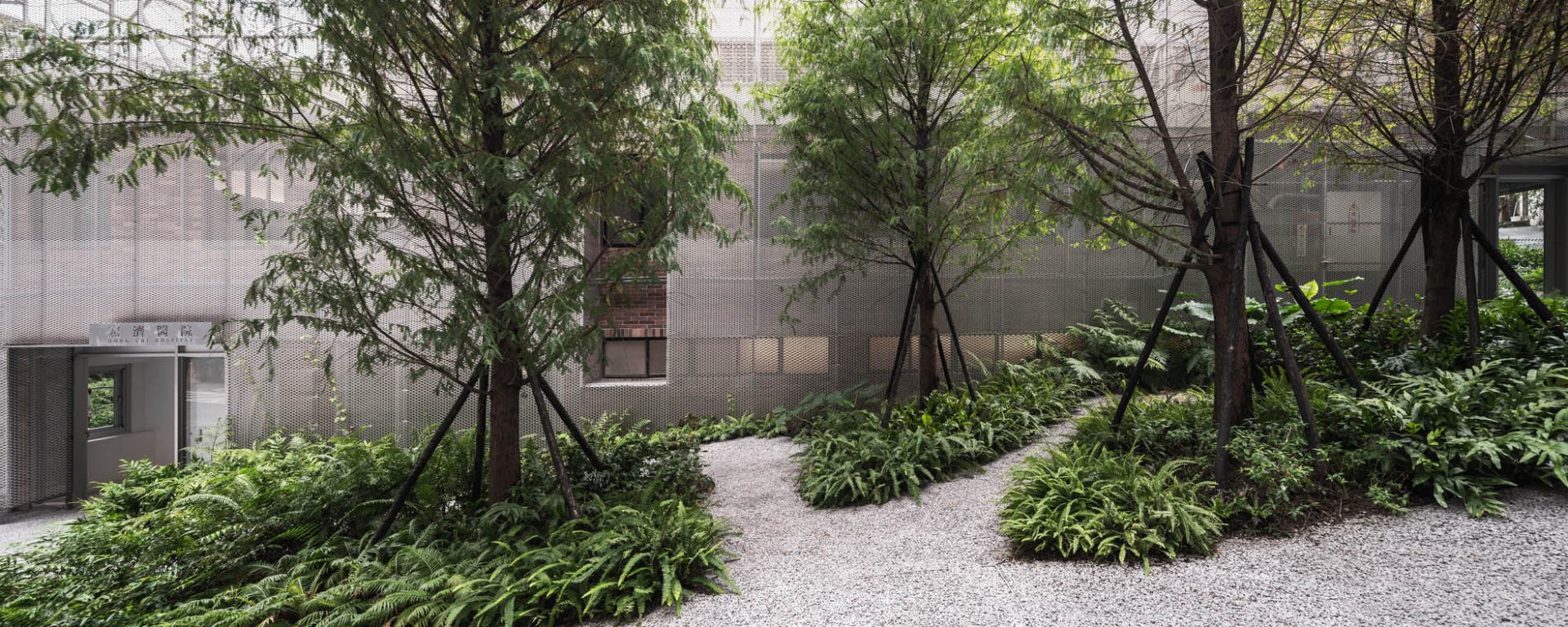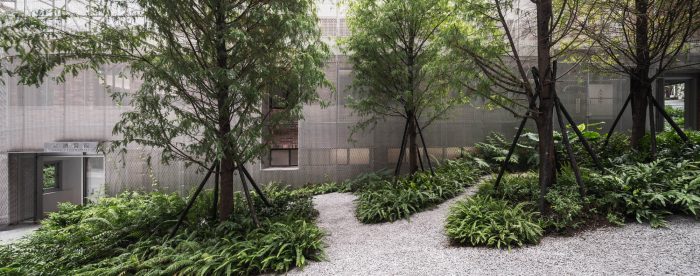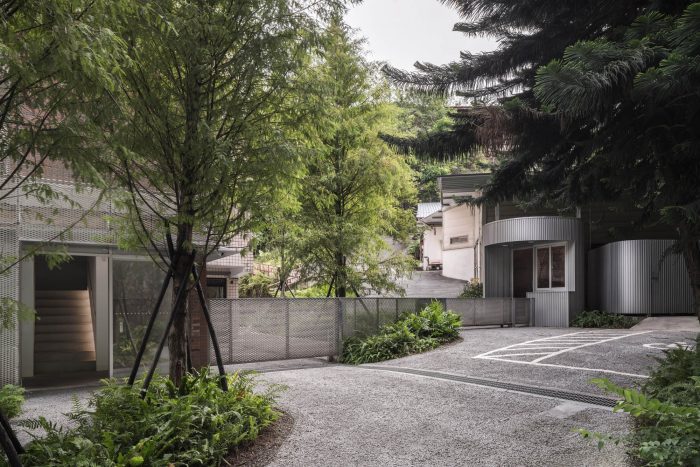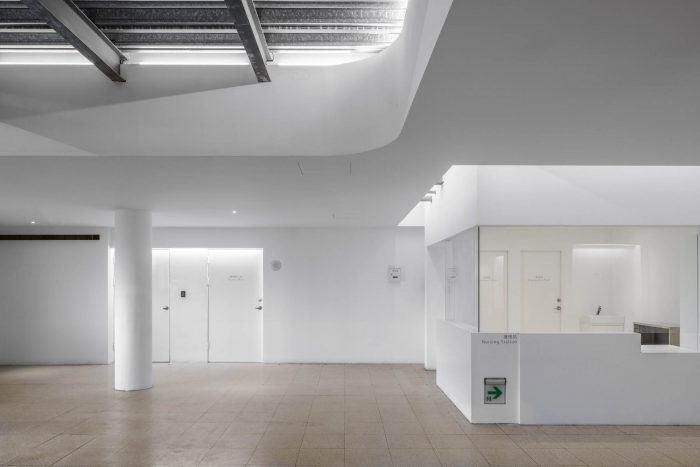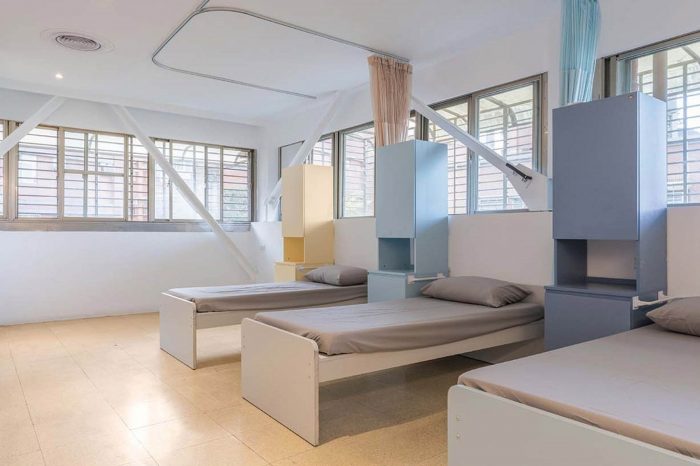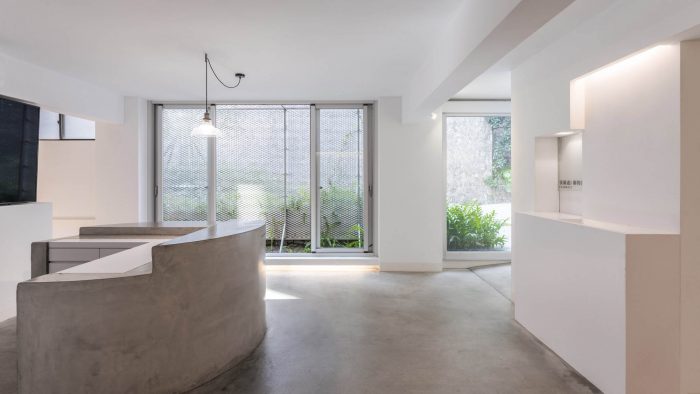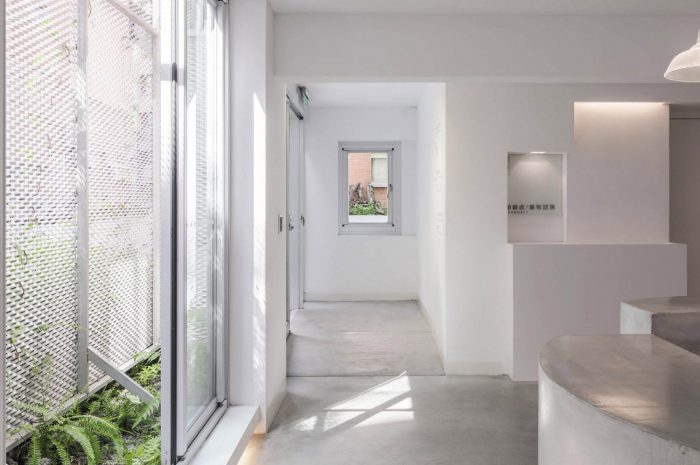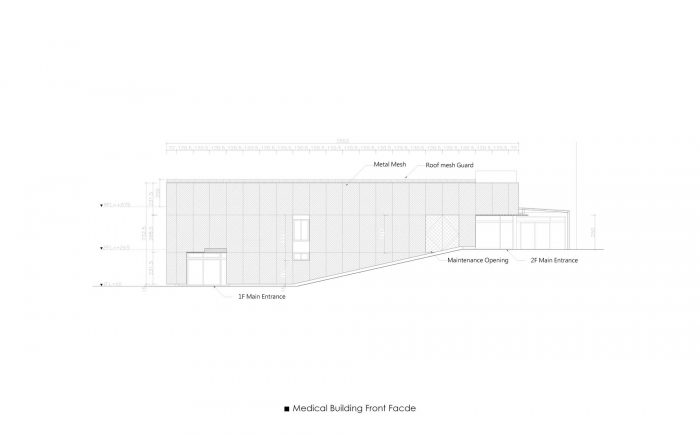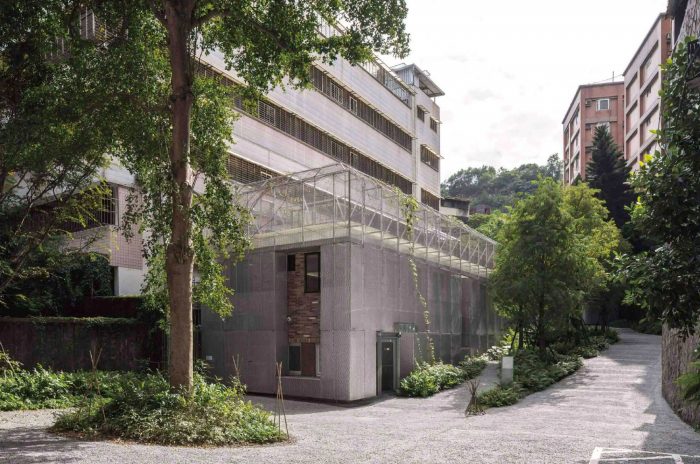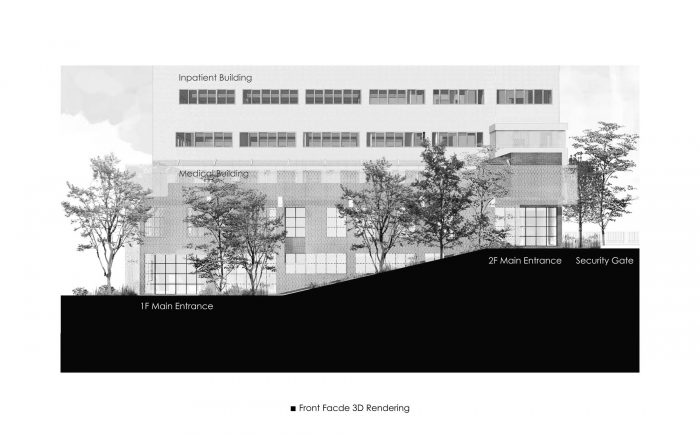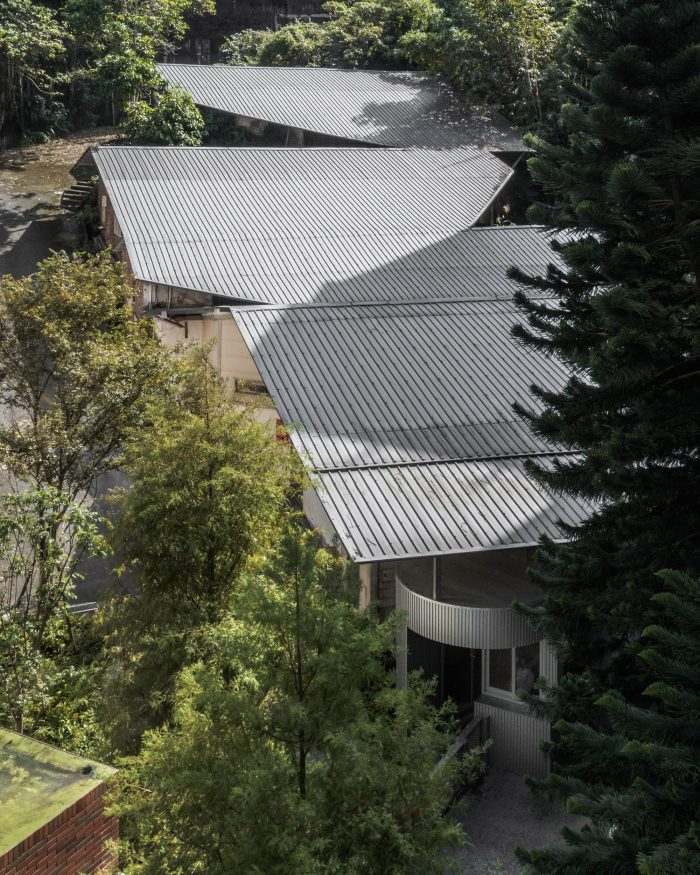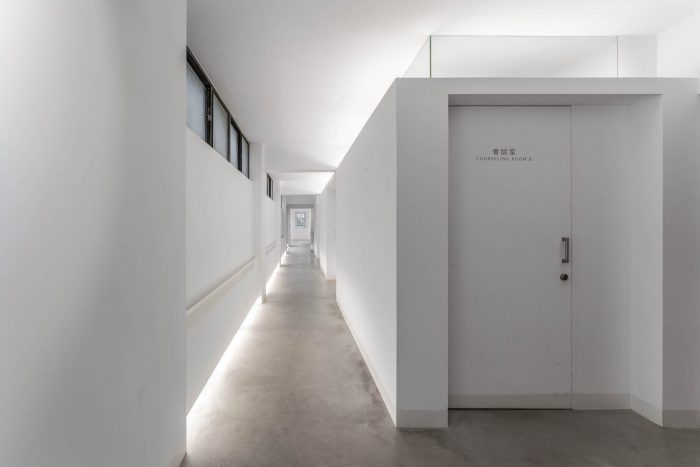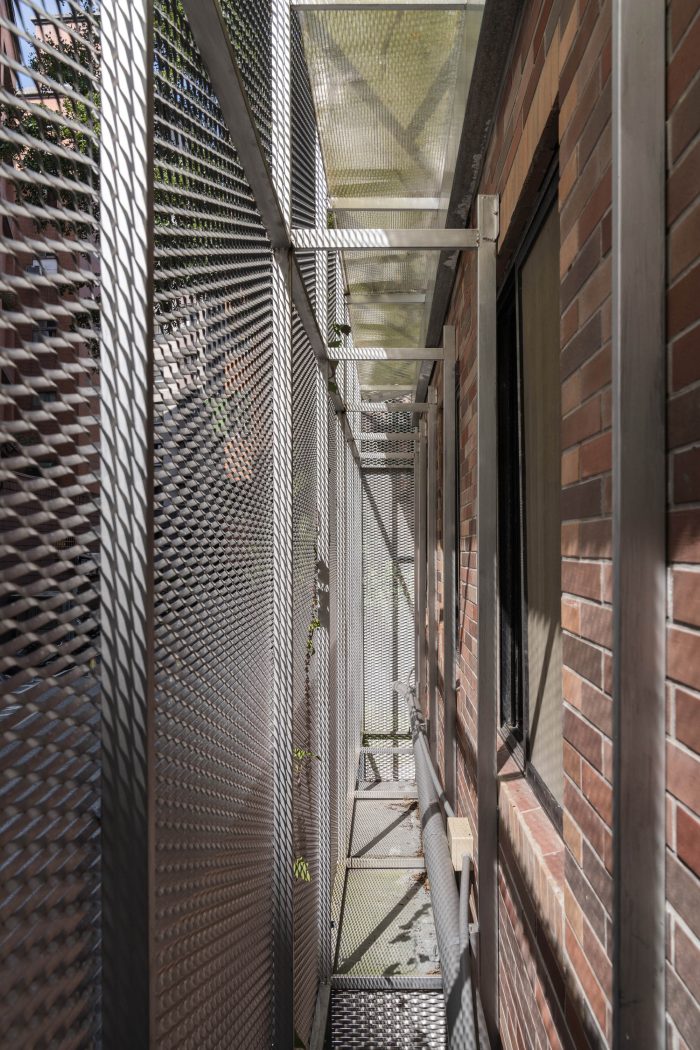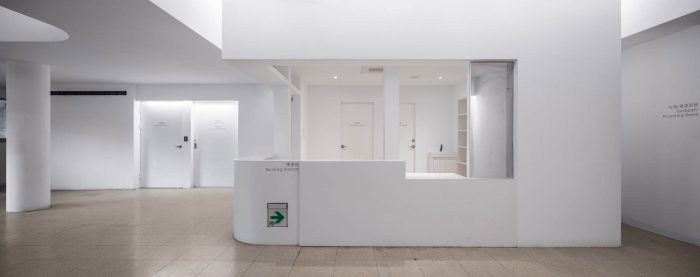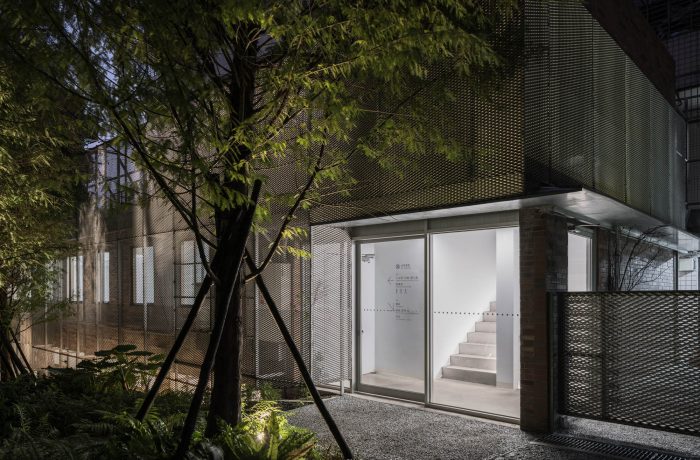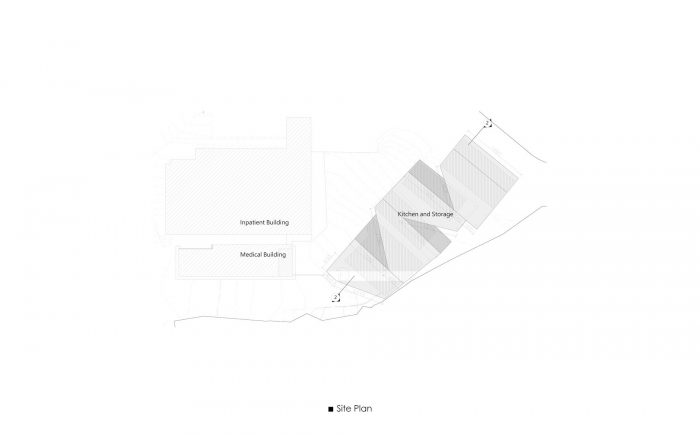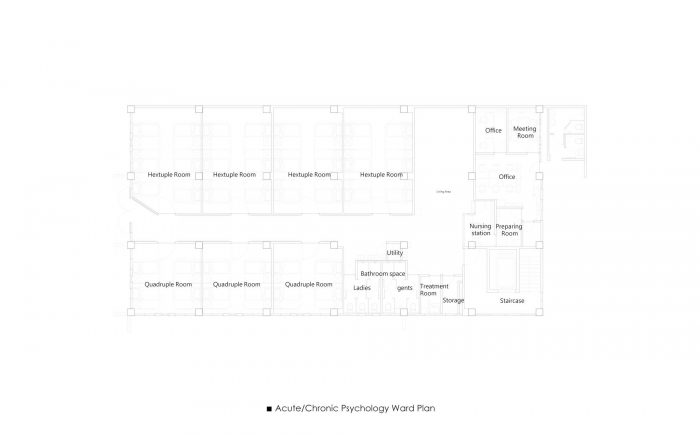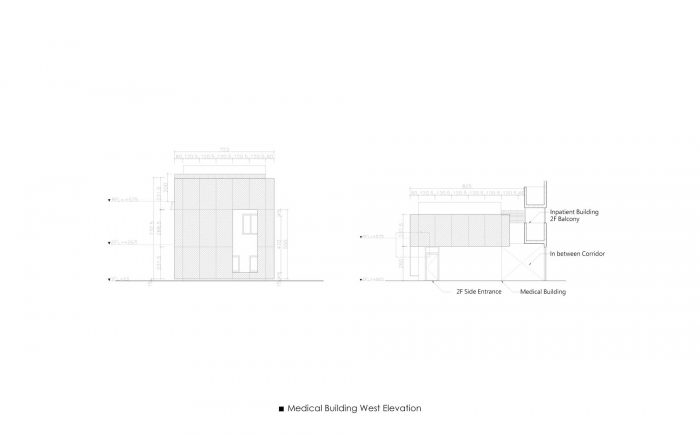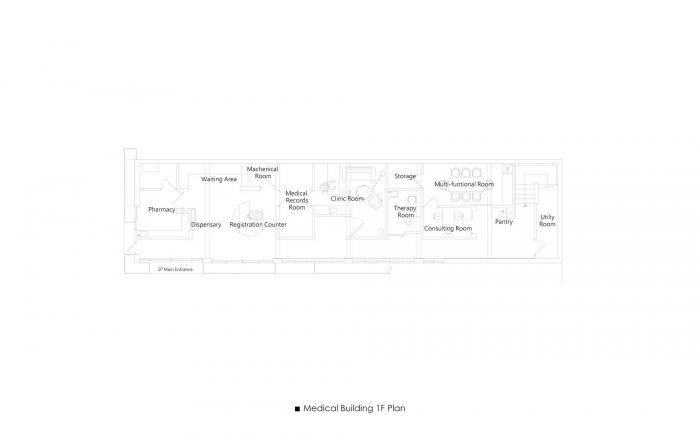“看外面的人,做梦;看里面的人,醒来。” C.G.荣格写的。
现有的神经精神科医院位于一个斜坡上。 在外部,入口处需要新建控制门和残疾人通道。 由于毗邻四层楼高的挡土墙,医疗大楼缺乏足够的阳光。 大楼内布满了机械管线,没有搬迁的预算。 在内部,内部需要重新设计,以适应新的医疗服务的需要。
“Who looks outside, dreams; who looks inside, awakes.” By C.G.Jung.
The existing neuropsychiatry hospital is located on a slope. On the outside, the entrance needs new controlled gate and handicapped route. The medical building lacks sufficient sunlight due to the adjacent four-story-high retaining wall. The building is covered with mechanical pipelines which has no budget to relocate. On the inside, the interior needs to be redesigned to accommodate the needs of new medical service.
作为设计师,我们希望重新审视这个机构的形象,重新构建医护人员和患者之间的关系,希望用现代医学的观点重新诠释神经精神病学,提升设计的心理(精神?
We, as designer, would like to re-examine the image of this institute and re-construct the relationship between the medical staffs and the patients, in hopes of re-interpret neuropsychiatry with modern medical point of view, and elevate the psychological(spiritual?) dimension of the design.
首先,我们把大门和保安岗亭一起拉回来。 新增一个全覆盖的垃圾处理空间,并与相邻的仓库共用屋顶。 重新设计医疗楼前的空地,拉长车道,降低坡度。 用绿化适应S形的方便残疾人的循环,并种植高大的树木,以消除挡土墙的视觉影响。
First, we pull back the gate along with the security post. Add a new fully-covered waste-disposal space and share its roof with the adjacent storage facility. Rework the open area in front of the medical building, elongate the driveway, and lower the slope. Accommodate a s-shaped handicap-friendly circulation with greenery, and plant tall trees to eliminate the visual impact of the retaining wall.
然后,我们将医疗楼的屋檐截断,在距离现有墙体60cm处加盖一层金属网。 虽然覆盖了旧的管线,提供了足够的防雨保护,但金属网可以让空气流动,光线反射到内部。 旧墙和新网形成了建筑的新表皮,界定了新旧、内外,在白天和夜晚都有不同的表现。
Then, we cut off the eaves of the medical building, and add a layer of metal mesh 60cm away from the existing wall. While covers the old pipelines and provides adequate protection from the rain, the metal mesh allows air to flow and light to reflect to the inside. The old wall and new mesh form a new skin for the building, It defines the old and the new, the outside and the inside, and appears differently during day and night.
景观是有机的。 建筑墙体是简化的。 内部是几何学和二元性的游戏。 空隙提供了空间,实体是储藏和家具。 物体似乎是独立和分离的。 虽然功能可能不同,但有些可能共享相同的几何体。 如保安柱和接待台都是相同的圆柱体形状。 同样的方法也适用于精神病院-护理院的内部。 类似的几何体和物体在不同的楼层重复出现,以产生似曾相识的效果,但在设计细节上却有差异,如方位的提示。
The landscape is organic. The building wall is simplified. The interior is the play of geometry and duality. The voids provide space, the solids are the storage and furniture. Objects seem independent and separated. Although function may vary, some may share the same geometry. Such as security post and reception counter share the same cylinder shape. The same method is applied to the interior of the psychiatry-care-home. Similar geometry and objects repeatedly appear in different floors to create deja-vu effect, but there are differences in design detail as the hint of orientation.
为了回应现代神经精神病学的概念,医院的半透明皮肤作为外部和内部之间的过滤器/受体,让景观与内部几何体融合。 身体是受体,大脑是编辑。 零碎的信息被接收、解码、编辑,组成一个人的现实。 量子物理学则宣称,外在现实是内在意识的实现。 医学的原理定义,外伤性大脑就是无法对现实做出反应,没有明确定义什么是绝对现实。 也许正常人和病人一样,都是在梦中。 两者的区别不在于症状,在于对外在意义的固执。
In response to the concept of modern neuropsychiatry, the semi-opaque skin of the hospital acts as the filter/receptor between the outside and the inside, allow for the landscape to blend with the interior geometry. The body is the receptor, the brain is the editor. Fragmented information is received, decoded, and edited to make up one’s reality. Quantum physics, on the contrary, claims that the outer reality is the realization of inner consciousness. Principle of the medical science defines a traumatic brain is one which is unable to respond to reality, without clear definition of what absolute reality is. Perhaps the normal are in dream just as the patients are. What differentiates the both is not the symptoms, is the stubbornness towards the external meaning.
建筑师: Wooyo Architecture
面积: 3400 m²
年份:2019年
照片:YHLAA
首席建筑师Hom LiouHom Liou
设计团队: Hsueh Chih Chang, Forrest Chiang, Jadan Tang
景观:Motif Planning & Design Consultants
城市 : 台北市
国家:中国
Architects: Wooyo Architecture
Area: 3400 m²
Year: 2019
Photographs: YHLAA
Lead Architect: Hom Liou
Team Desingers:Hsueh Chih Chang, Forrest Chiang, Jadan Tang
Architects:Wooyo Architecture
Landscape:Motif Planning & Design Consultants
City:Taipei City
Country:China

